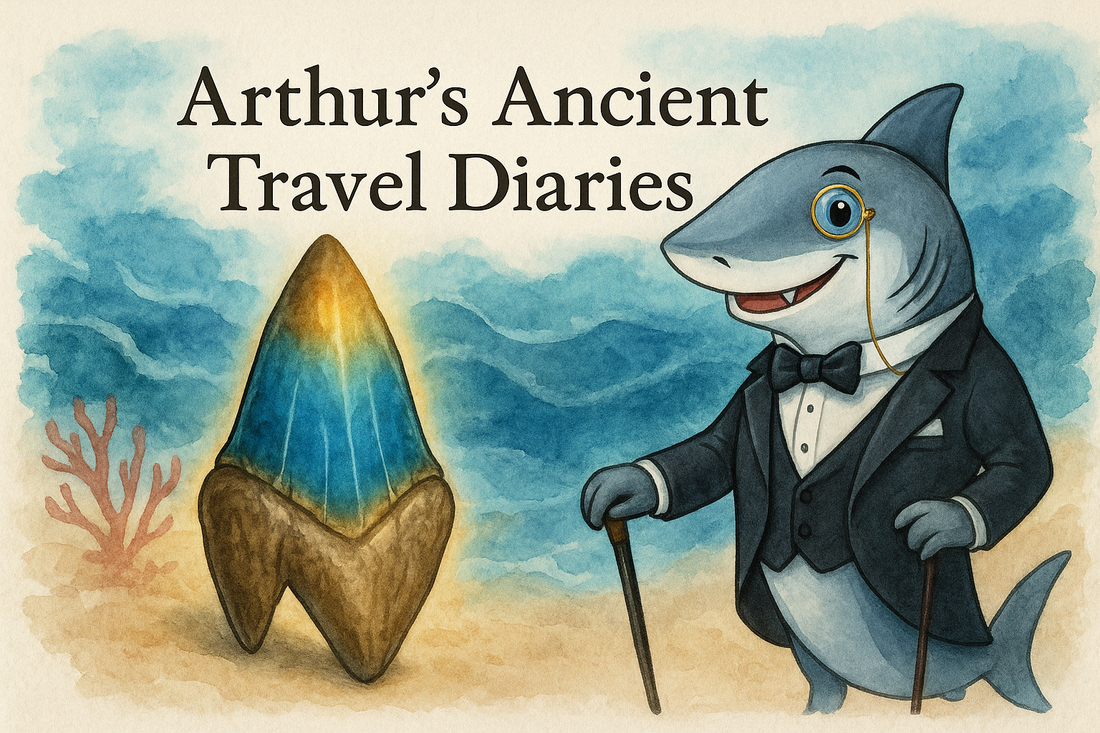
Arthur’s Ancient Travel Diaries: Secrets Hidden in Shark Teeth
By Arthur the Shark ·

Hello there, friends! Arthur the Shark here—your dapper guide to the mysteries of the deep. 🦈🎩✨ You know, people often admire my pearly whites (gold tooth included, thank you very much), but did you realize that shark teeth are not just teeth? They’re actually tiny travel journals from millions of years ago.
The Secret Bands of the Sea
Scientists recently discovered something extraordinary: fossilized shark teeth hold delicate chemical bands inside their enamel. These aren’t random decorations—they record where sharks traveled and what waters they swam through. Think of it like tree rings, but instead of counting birthdays, we’re tracing migration routes.
When a shark cruised through coastal waters teeming with food, certain elements—like strontium and barium—were locked into its tooth enamel. When the shark paddled out into the deep blue, those levels shifted. Layer by layer, bite by bite, a tooth became a map of the ocean’s seasons.
A Diary Written in Enamel
Each fossil tooth is essentially a prehistoric passport, stamped with every migration. Coastal shallows in spring? Stamp! Open ocean in winter? Stamp! Over the course of one year, a tooth told the story of survival, adventure, and adaptation in ancient seas.
So when you hold a fossil shark tooth today, you’re not just holding a remnant of bone—you’re cradling a page from an ocean diary written 20 million years ago. That’s older than mountains, older than deserts, older than most of the world as we know it.
Fossils With a Story, Art With a Soul
At Fossil Art Creations, we take these timeless travelers and pair them with resin waves, elegant jewelry, and one-of-a-kind décor. The fossils themselves already carry a saga of movement and migration—we simply make sure their stories shine with the elegance they deserve. The next time you see a shark tooth in one of our pieces, remember: you’re not just wearing history. You’re wearing adventure.
Frequently Asked Questions
Do shark teeth really show migration patterns?
Yes. As sharks move between coastal and open-ocean waters, differences in water chemistry get recorded as trace-element bands in growing enamel.
How old are most fossil shark teeth?
Many are tens of millions of years old (the exact age depends on the species and the layer where they’re found).
Which elements show up in the bands?
Commonly tracked elements include strontium and barium; their ratios can reflect seasonal shifts and habitat changes.
Until next tide,
Arthur the Shark
Adventure, Elegance, and the Ocean in Every Creation
